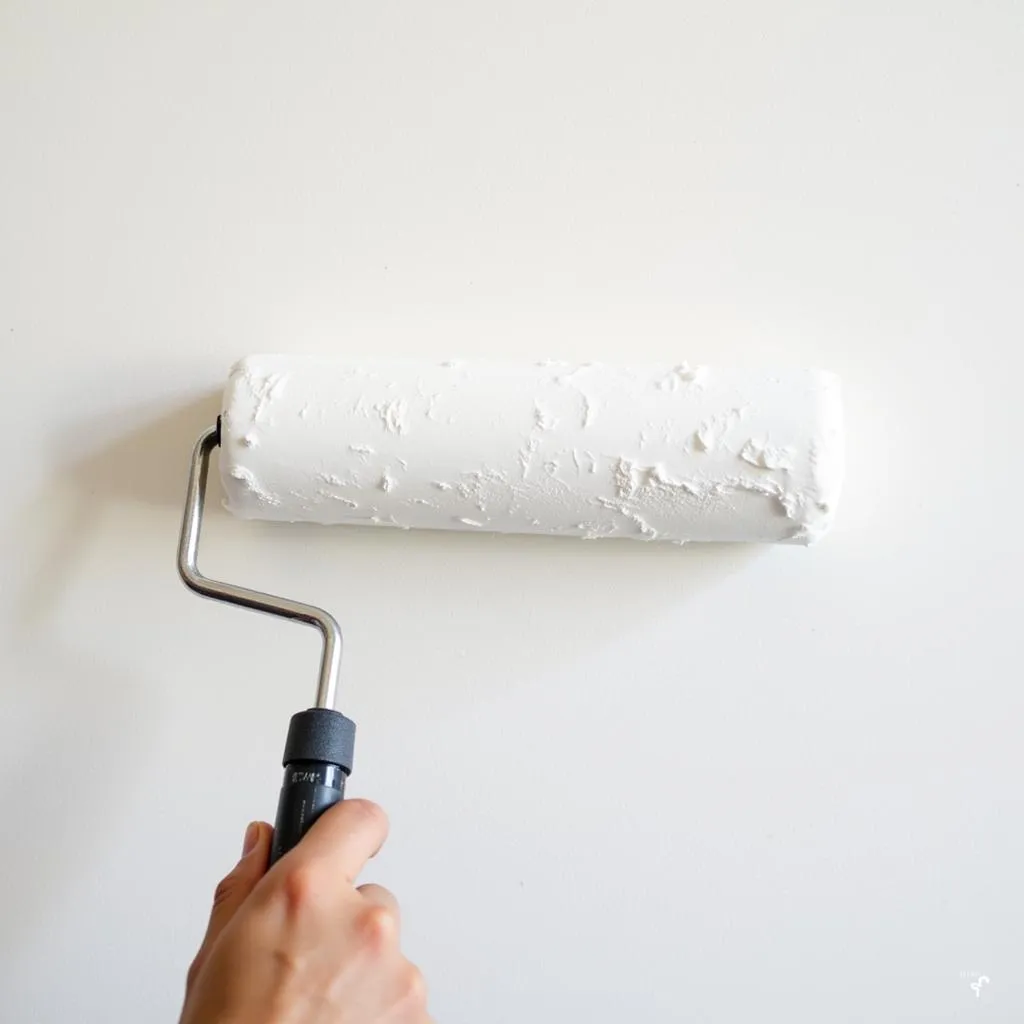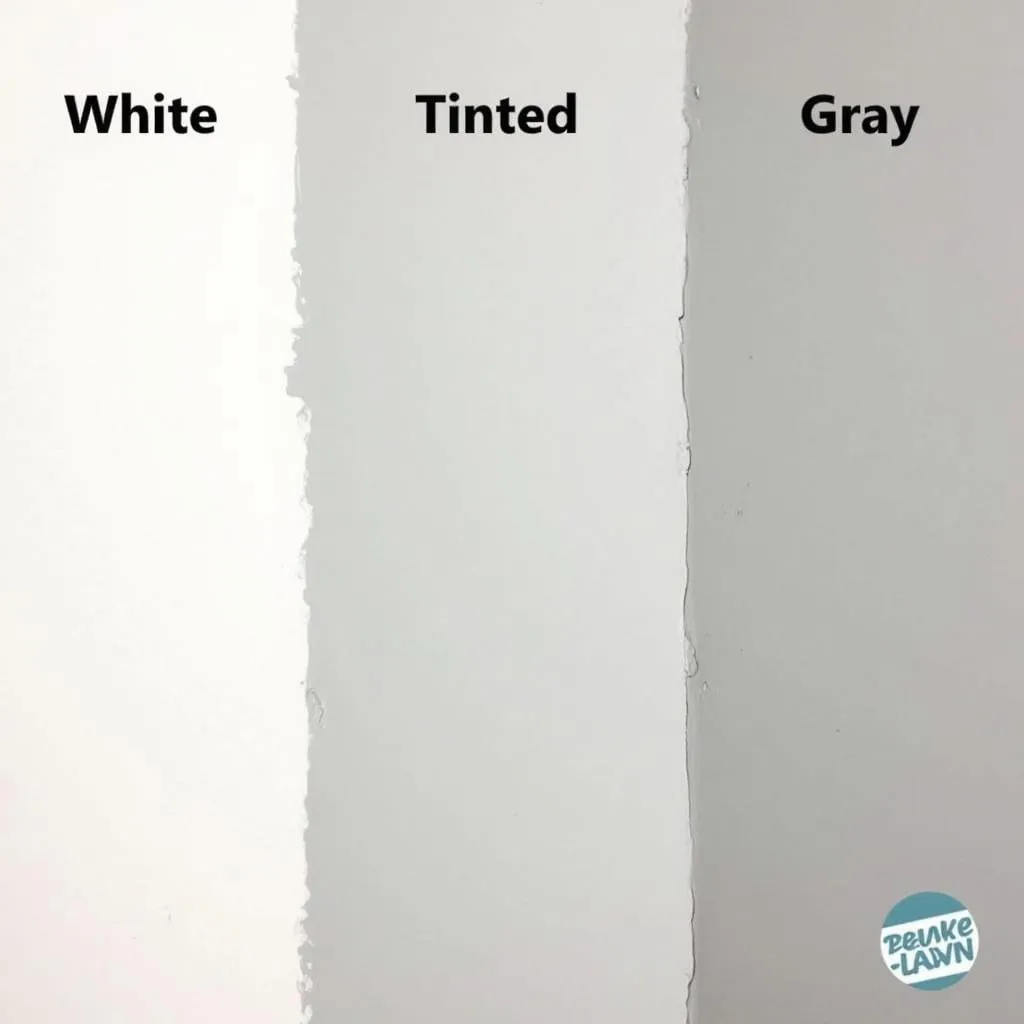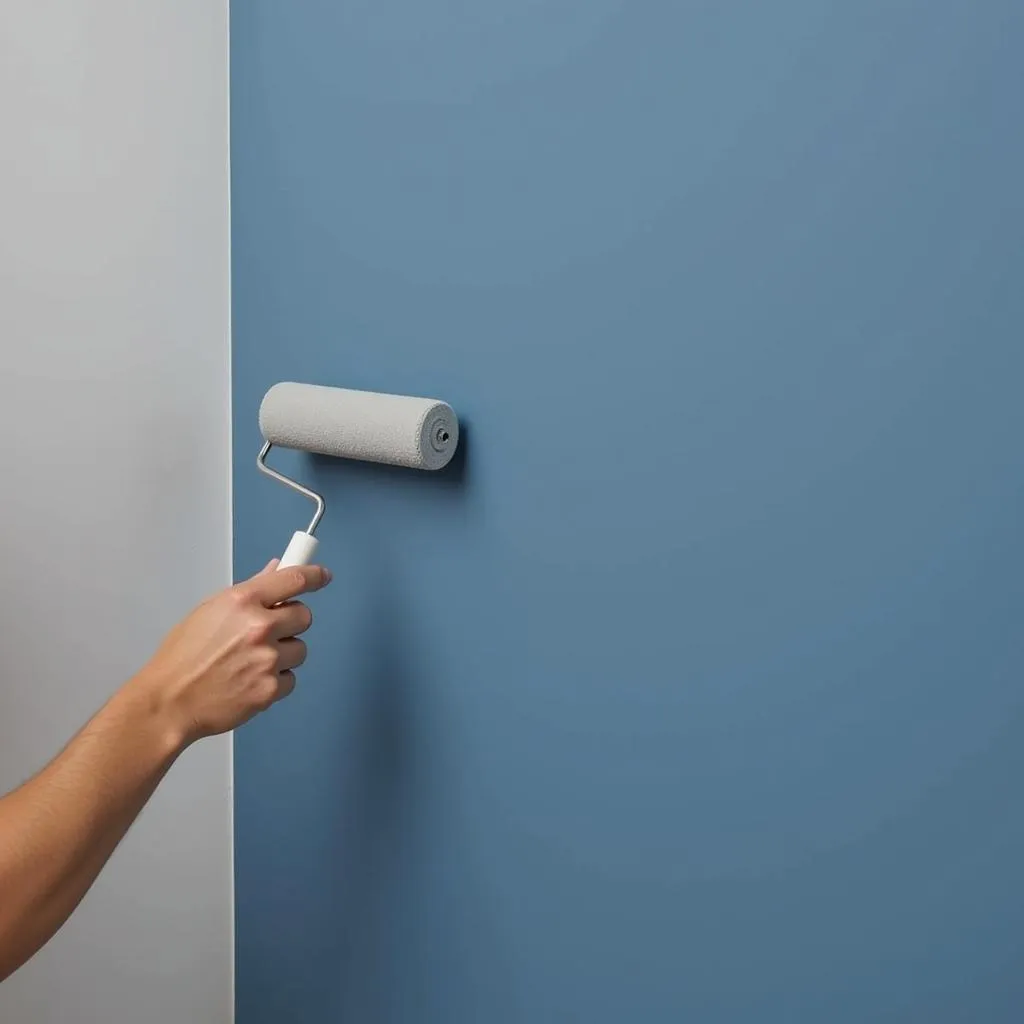Choosing the right primer can feel like navigating a labyrinth of paint options. But don’t worry, understanding what primer color to use is simpler than you think. At Color Box Hanoi, we believe a beautifully painted room starts with a smooth, flawless base. This guide will demystify primer colors and equip you with the knowledge to make the perfect choice for your next painting project.
Why Is Primer Important?
Before we dive into the color selection, let’s revisit why primer is a crucial step in any painting project. Imagine painting a stunning masterpiece on a canvas riddled with imperfections – the final result wouldn’t reflect the true beauty of your work. The same principle applies to your walls.
Primer acts as a preparatory layer, smoothing out imperfections, sealing porous surfaces, and creating a uniform base for your paint to adhere to. This ensures a professional-looking finish with vibrant, true-to-color results.
 Applying Primer to Wall
Applying Primer to Wall
Decoding the Primer Color Palette
The world of primers extends beyond basic white. While white primer might seem like the default choice, understanding the role of different primer colors can make a significant difference in achieving your desired outcome.
White Primer: The All-Around Performer
White primer is an excellent choice for most interior painting projects. It offers good coverage, hides minor imperfections, and allows lighter paint colors to shine through vibrantly.
Gray Primer: The Color Transition Hero
Switching from a dark paint color to a significantly lighter one? Gray primer acts as a bridge, preventing the old color from bleeding through and ensuring the new color appears accurate. It’s also ideal for covering stains and imperfections that white primer might not fully conceal.
 Comparing Primer Colors
Comparing Primer Colors
Tinted Primer: The Bold Color Enhancer
When using bold or deep paint colors, especially reds, oranges, or yellows, a tinted primer can significantly enhance the vibrancy and depth of the final coat. Your paint retailer can tint the primer to closely match your chosen paint color, ensuring a richer, more saturated finish.
Factors to Consider When Choosing Primer Color
While the above guidelines offer a solid starting point, several factors influence the ideal primer color for your project:
- Existing Wall Color: If you’re painting over a dark color, a gray or tinted primer is your best bet.
- Desired Paint Color: For light paint colors, white primer works well. For bold or deep colors, consider a tinted primer.
- Surface Condition: For heavily stained or patched walls, gray primer provides superior coverage.
- Paint Type: Certain paints, like reds and yellows, benefit from a tinted primer to achieve optimal vibrancy.
Common Primer Color Scenarios:
Let’s break down some typical scenarios to illustrate the best primer color choices:
- Painting a light blue over a previously white wall: White primer will suffice.
- Switching from a dark brown to a light beige: Opt for a gray primer to prevent the brown from bleeding through.
- Covering water stains on the ceiling before painting it white: Use a stain-blocking primer, which often has a white base.
- Applying a vibrant red accent wall: Choose a red-tinted primer for a richer, more intense final color.
 Painting Over a Dark Wall
Painting Over a Dark Wall
Conclusion:
Choosing the right primer color doesn’t have to be a guessing game. By understanding the role of each color and considering your specific project needs, you can create a flawless foundation for a beautifully painted space. At Color Box Hanoi, we are passionate about helping you achieve professional-looking results. Contact us today for expert advice on selecting the perfect primer and paint for your next project. Our team is here to guide you every step of the way, ensuring a smooth and satisfying painting experience.
FAQ
1. Can I use white primer for everything?
While white primer is versatile, it’s not always the ideal choice. Consider gray or tinted primers for specific situations like covering dark colors or enhancing bold paint shades.
2. Do I always need to use a primer?
Priming is highly recommended for most painting projects as it ensures optimal paint adhesion and a smoother finish. However, some paints might have built-in primers, so check the manufacturer’s instructions.
3. Can I tint my own primer?
While possible, it’s best to have your primer tinted by a paint professional to ensure color accuracy and consistency.
4. How long should primer dry before painting?
Drying times vary, so always follow the manufacturer’s instructions. Generally, allow the primer to dry completely before applying your chosen paint.
5. Can I paint over primer without sanding?
In most cases, sanding isn’t necessary if the primer is applied smoothly. However, if there are any rough patches, lightly sand them before painting for a flawless finish.
For more information on color selection and painting tips, explore these helpful resources:
- What Color Makeup Covers a Bruise?
- Cuál es el mejor protector solar con color?
- How to Know Which Lipstick Color Suits You
- What Color is Pine?
- What Paint Color Hides Imperfections Best?
Need further assistance with your painting project?
Contact us at:
Phone Number: 0373298888
Email: [email protected]
Address: 86 Cau Giay, Hanoi.
Our dedicated customer service team is available 24/7 to answer your questions and provide expert guidance.

